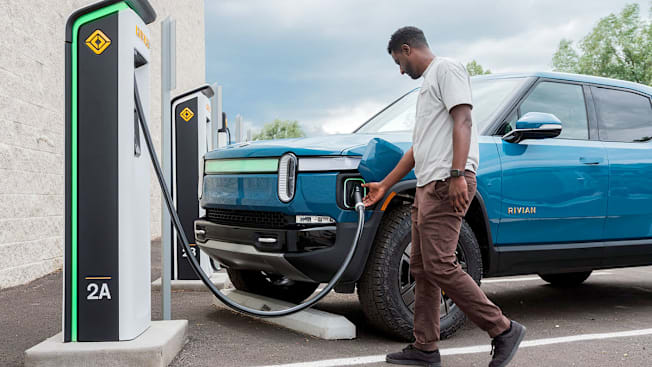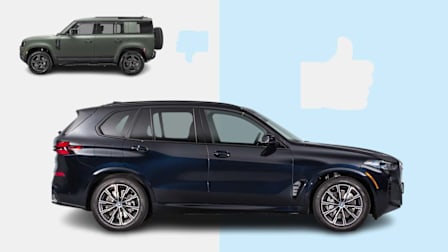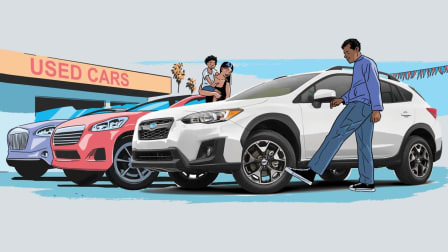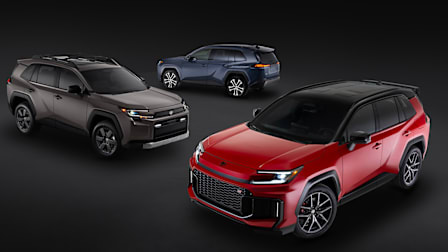The Most Common EV Charging Problems—and How to Avoid Them
A survey of electric car owners reveals the most reliable charging networks and the challenges of EV charging on the road

Electric car owners experience a problem at 1 out of every 5 public charging sessions they initiate, according to a recent survey by Consumer Reports’ EV Charging Community. The likelihood of problems varied widely depending on the charging network, with Tesla Superchargers and Rivian’s Adventure Network having the least number of sessions with reported problems.
Owners experienced fewer problems (4 percent) with Tesla Superchargers than DC fast chargers (34 percent) and even Level 2 chargers (25 percent).
The most frequently reported issues were with payment systems and charger hardware. Of the respondents who had problems with the charger itself, 76 percent of the ones they faced involved screens that were broken or unresponsive, or had an error message.
Even EV drivers who were able to use the charger itself weren’t always able to make it all the way to a successful charge. Among those who had a problem, 23 percent of the sessions involved issues with making a payment. A majority of those problems (56 percent) occurred when the driver was able to pay but encountered some kind of issue. A quarter of them reported that payment failed entirely, forcing the owner to find another charger to use. Worst of all, 19 percent of problems involved the charger not starting even though payment was accepted. Those drivers paid for a service they didn’t receive.
Survey respondents had the most trouble with the Shell Recharge network of chargers. They experienced problems during 48 percent of charging sessions. Drivers using the EVgo network had problems during 43 percent of their charging sessions, and Blink network users experienced problems during 41 percent of their charging sessions. By comparison, the networks with the least number of reported problems were operated by Tesla (4 percent) and Rivian (5 percent.)
Consumer Reports' EV Community
The 1,230 survey participants are from Consumer Reports’ EV Charging Community, a group of electric vehicle and plug-in hybrid electric vehicle owners who share feedback through quick surveys after they charge in public. (CR partnered with the Electric Vehicle Association, GreenLatinos, Forth, Generation180, Plug In America, and the Texas EV Education Project to build this community.)
We ask members about the reliability of the charging station they used, whether they were able to charge and drilling into the problems they may have experienced relating to hardware, payment, and charging speed.
“The EV Charging Community brings together EV and PHEV drivers from across the country,” Toher says. “By calling out broken screens, payment issues, and slow charging power, community members are crowdsourcing data that will hold charging networks accountable and improve drivers’ experience with public charging. This will help tackle the biggest impediment for consumers looking to purchase a more efficient vehicle.”
Join CR's EV Charging Community
Community members share their observations after they charge their EV or PHEV to highlight where improvements are needed.
Best Practices for a Great Charging Experience
Even though plenty of drivers experience problems with public chargers, there are ways to help prevent certain headaches and otherwise make a trip in an EV or PHEV go smoothly. Here are some tips to help you stay powered up—at home or on the road—with less hassle. (For even more information, read our Secrets to Electric Car Charging.)
Have multiple accounts. Before you depart, look up the charging stations on your route and create an account for each of the different networks you might encounter. Having an account with your payment info ready will save you time when you get to the charger. Plus, if the charger screen isn’t working or is damaged, or if the charger can’t accept a credit card, you still may be able to complete the transaction using the app.
Check the apps for availability and status. Apps such as A Better Route Planner, PlugShare, and Chargeway (a partner with the EV Charging Community) will show you all of the available chargers and their operating status. Some apps can also plan your drive based on your vehicle, and send you to chargers that aren’t out of service.
Don’t charge to full. EV batteries charge fastest and most efficiently between almost empty and about 80 percent full. Adding that final 20 percent can take a lot longer than the rest of the charge. As long as you can make it to the next charger or to your destination, you don’t need to spend that extra time waiting for a full charge.
And don’t wait until the battery is empty. Driving to empty is harmful to the battery’s long-term health and can heighten range anxiety and become a challenge if you encounter broken or busy charging stations.
Buy a home charger. The easiest way to guarantee that you’ll always have a charge is to buy a home charger. Of course, this isn’t an option for everyone, such as apartment dwellers or people who rent their homes. But owning a Level 2 (220 volt) charger allows you to charge overnight when you don’t need the vehicle. Charging at home is probably already cheaper than using a public charger, and you may also be able to take advantage of lower electricity rates by charging during off-peak hours, depending on your utility company.
Precondition the cabin. By preconditioning your EV when it’s plugged in—via app or through the car’s infotainment system—you can heat or cool the cabin while connected to the electric grid. This means you won’t be using energy from the battery to get to a comfortable temperature while you’re driving.
Get the most out of your charging session before arriving. Many EVs can precondition the battery for a charging session, which heats it up and allows it to receive a charge more quickly. This is particularly helpful in cold weather when batteries charge much more slowly. You can usually activate this feature by entering a DC fast charger into the vehicle’s navigation system or pressing a button to manually start the process.
Choose an EV with 300+ miles of range. Many electric vehicle buyers say that they suffer from range anxiety—worrying about running out of battery before reaching their destination. But most modern EVs have a range of over 250 miles on a full battery, and an increasing number of models are available with 300 miles of range or more. That range is sufficient for most trips.





















